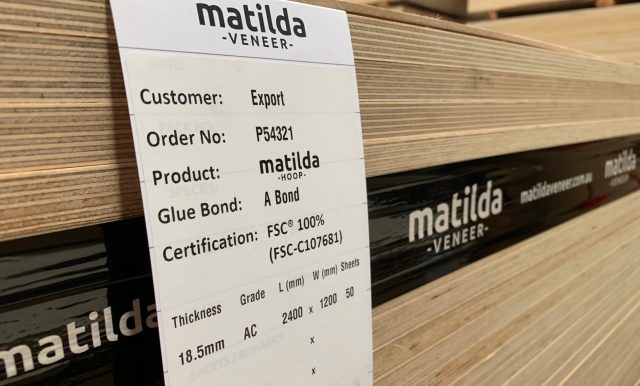When you’re making plywood there’s a lot of things that can go wrong. At Matilda, we have tight controls and procedures throughout the production process to ensure the finished plywood meets the high standards we’ve become known for. When the plywood arrives in our warehouse and goes through our final quality control processes, we are very careful to ensure the hard work that’s gone into producing these beautiful sheets is not undone by making sure we store and handle it correctly. Once the plywood is sold and packed on the truck, the responsibility of ensuring the plywood remains in top condition transfers to the distributor/reseller/customer, so you need to know how to look after it just as we did while you store or prepare to install it.
So, what can go wrong? How do we prevent it? And what should you be doing to ensure your plywood remains in top condition? Most of the answers are common sense, however in saying that, such problems are usually of the result of people simply not knowing the right and wrong way to look after their plywood before installing it into their next project. And that’s why we thought it was time to clearly explain what you should be doing.
The key objectives are:
- keeping the plywood flat by preventing twisting or bowing. Just because they started flat, doesn’t mean they will remain that way.
- Keeping the plywood dry. Exposure to moisture can lead to mould and decay.
- Keeping the plywood beautiful. Avoiding damage, stains, contaminants and UV light will keep your plywood looking great.
To ensure you’re doing everything in your power to look after your plywood we suggest the following storage and handling
suggestions (lovingly borrowed from AS2271):
- The storage area should be well-ventilated and protected from the sun, rain and wind that would otherwise bring about rapid changes in temperature and humidity.
- Support for the sheets should be provided at both ends and the middle of the pack at a minimum to avoid distortion. At Matilda, we use a minimum of four bearers on each pack for 2400×1200 sheets, more for larger sheets or packs of thin plywood (see left)
- The stack should be kept dry and clear of ground contact and away from risks of damage or contamination from external factors
- The sheets should be stacked flat, never on their edge.
- To avoid staining, fading and surface checking, the sheets should not be exposed to the weather while awaiting installation. A reminder that UV light will effect the aesthetic of your raw timber products.
Following these simple guidelines will help to ensure the plywood you’ve purchased will stay in top condition and help prevent issues at installation which will result in you saving time and money and ensure that the finished results meet (or exceeds) expectations.
If you have specific questions regarding plywood that you felt weren’t answered in this blog, simply give one of our team a call on (07) 5594 0655. We’re always happy to hear from you!
Matilda Veneer manufactures and distributes a range of unique and decorative plywood products including Hoop Pine, Matilda Fireply (Group 1 Certified Fire Retardant Plywood), Birch Plus and Lite Ply.



